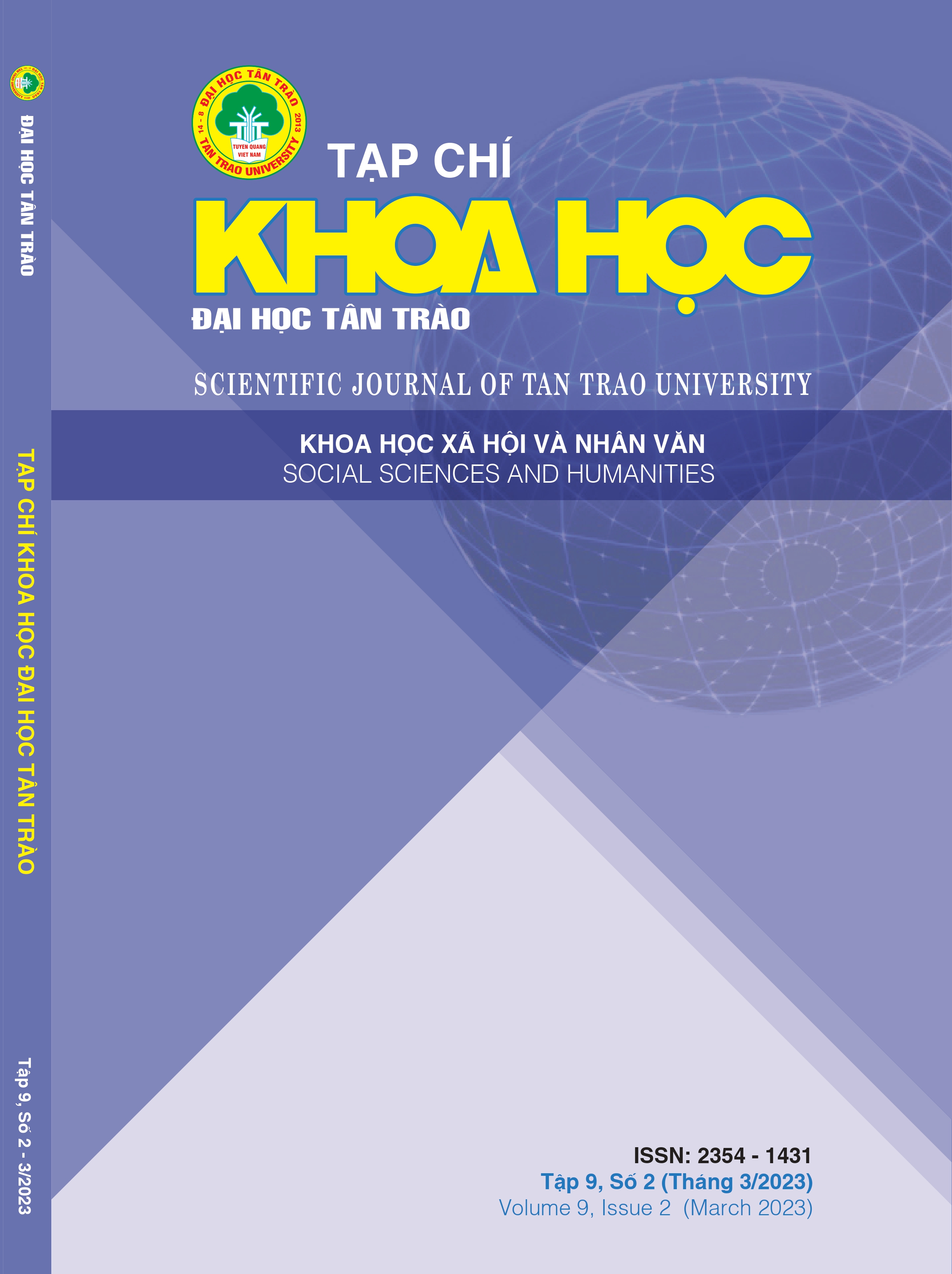Non-English Major Students’ Strategies to Reduce Anxiety towards English Group Presentations
DOI:
https://doi.org/10.51453/2354-1431/2023/922Keywords:
effective strategies; anxiety; English group presentation; internal factor; external factorAbstract
Anxiety indeed an ordinary thing experienced by everyone when talking in public and can be increased if it is done by using a foreign language. Accordingly, this study aimed to provide a specific description of the students’ anxiety in delivering English presentations as well as provided a solution on how to deal with the anxiety. By applying the quantitative method, a questionnaire survey was floated to the participants for a seven-day period at Hanoi Law University within 100 non-English major students who shared anxieties about delivering presentation and recommended effective strategies for the method. There were several factors that affected student anxiety, namely internal factors which covered fear of failure, fear of criticism, conflicting emotion, speech anxiety, negative experience, fear of losing the thread of material, fear of being stopped, and negative thinking; and external factors which covered condition of presentation room, failing to practice, gender, and physical factor. Strategies that could be applied by participants to cope their anxiety in delivering English presentation were to keep thinking positively toward the audience, the speech, and their self as a speaker, to make good preparation, to rehearse, to keep self-confidence, and to do relaxation.Downloads
References
[1] Alrabai, F. (2014). A Model of Foreign Language Anxiety in the Saudi EFL Context. English Language Teaching, 7(7). 82-101. http://dx.doi.org/10.5539/elt.v7n7p82
[2] Asnur, S. M. (2010). The Anxiety of Students in Business English Internship Report Presentation at Business English Study Program of Language and Literature Faculty of State University of Makassar. Unpublished Thesis. Makassar: PPs UNM.
[3] Abu-Rabia, S., Peleg, Y., & Shakkour, W. (2014). The Relation between Linguistic Skills, Personality Traits, and Language Anxiety. Open Journal of Modern Linguistics, 4(1), 118-141. https://doi.org/10.4236/ojml.2014.41011.
[4] Brown, H. D. (1991). Breaking the language barrier: Creating your own pathway to success. Yarmouth, ME: Intercultural Press.
[5] Bozavli, E., & Gulmez, R. (2012). Turkish Students' Perspectives on Speaking Anxiety in Native and Non-Native English Speaker Classes. US-China Education Review, B12, 1034-1043. https://files.eric.ed.gov/fulltext/ED539787.pdf
[6] Iizuka, K. (2010). Learner coping strategies for foreign language anxiety. In A. M. Stoke (Ed.), JALT2009 Conference Proceedings. Tokyo: JALT. https://jalt-publications.org/archive/proceedings/2009/E065.pdf
[7] Kushner, M. (2010). Public speaking for dummies. John Wiley & Sons
[8] Katz, L. (2000). Public Speaking Anxiety (a brochure). University of Tennessee at Martin Counseling and Career Services.
[9] Knight, M. L., Johnson, K. G., & Stewart, F. (2016). Reducing student apprehension of public speaking: Evaluating effectiveness of group tutoring practices. Learning Assistance Review, 21(1), 21-52. https://files.eric.ed.gov/fulltext/EJ1095773.pdf
[10] Morgan, N. (2008). How to become an authentic speaker. Harvard Business Review, 11(86), 115-119. https://ablconnect.harvard.edu/files/ablconnect/files/authentic_speaking_hblunden.pdf.
[11] Riegel, D. G. (2013, January 17). 3 Strategies for managing public speaking anxiety: In creative braintrust. Retrieved from http:// www.fastcompany.com/3004857/3-strategies-managing-public- speaking-anxiety
[12] Spielberger, C. D. (1983). Manual for the state-trait anxiety inventory. Palo Alto, California: Consulting Psychological Press.
[13] Timina, S. (2015). Causes of English-speaking Anxiety among Taiwanese University Students. Proceedings of INTCESS 15-2nd International Conference on Education and Social Science. (pp. 1305-1309). http://www.ocerint.org/intcess15_e-publication/papers/351.pdf
[14] Yamat, H., & Bidabadi, F. S. (2012). English language learning anxiety among Iranian EFL freshman university learners. Research Journal of applied sciences, 7(8), 413-420. http://docsdrive.com/pdfs/ medwelljournals/rjasci/ 2012/413-420.pdf
[15] Nikam, A. S., & Ambekar, A. G. (2016, August). Bilingual sign recognition using image-based hand gesture technique for hearing and speech impaired people. In 2016 International Conference on Computing Communication Control and automation (ICCUBEA) (pp. 1-6). IEEE. https://doi.org/10.1109/ICCUBEA.2016.7860057
Downloads
Published
How to Cite
Issue
Section
License

This work is licensed under a Creative Commons Attribution-ShareAlike 4.0 International License.
All articles published in SJTTU are licensed under a Creative Commons Attribution-ShareAlike 4.0 International (CC BY-SA) license. This means anyone is free to copy, transform, or redistribute articles for any lawful purpose in any medium, provided they give appropriate attribution to the original author(s) and SJTTU, link to the license, indicate if changes were made, and redistribute any derivative work under the same license.
Copyright on articles is retained by the respective author(s), without restrictions. A non-exclusive license is granted to SJTTU to publish the article and identify itself as its original publisher, along with the commercial right to include the article in a hardcopy issue for sale to libraries and individuals.
Although the conditions of the CC BY-SA license don't apply to authors (as the copyright holder of your article, you have no restrictions on your rights), by submitting to SJTTU, authors recognize the rights of readers, and must grant any third party the right to use their article to the extent provided by the license.


